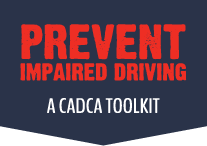South Dakota youth coalition lowers drunk driving rate
A youth coalition located in the small, frontier town of Sturgis, South Dakota has cut instances of drunk driving nearly in half over the past three years, but not without support from the community.
Kara Graveman, executive director of Action for the Betterment of the Community (ABC), said that Sturgis is often best-known for its annual motorcycle rally. But after looking over their youth risk survey results trend data, as well as testimonials from their Youth Leadership Team, the coalition found that most of the youth have a low perception of harm when it comes to impaired driving.
The prevalence of alcohol in the community did not help, either. “One of the things we really knew [was that] the more alcohol is positively promoted, the more likely you are to experiment and see it as a positive community norm,” Graveman explained.
The alcohol density in and around Sturgis is large. There are 73 alcohol outlets and only 23,000 residents in Meade County. Within the city of Sturgis, there are 35 establishments licensed to serve or sell alcohol for a population of just 6,000.
In order to combat this growing epidemic, the effort was multi-fold: ABC partnered with the local police department, local schools and the state attorney’s office to hold high visibility events. One of those events were police checkpoints, where drivers were stopped to have their Blood Alcohol Content (BAC) tested.
To make sure that they were “comparing apples to apples,” the checkpoints were held at the same time of day at the same locations. Thanks to a small partnership grant, those who went through the checkpoint were given t-shirts that said “I survived a DUI checkpoint: I don’t drink and drive.”
“You can see people wearing them around town,” Graveman said. “They provide info about the police department but also an awareness that we are in the initiative together.”
Police officers also walked through bars on Friday and Saturday nights, just to make patrons aware of their presence. A crew of officers also biked around the city park, which is about three to four miles in parameter, “just to be able to put an officer out there.”
In addition, sergeant and patrol officers worked with adolescents who had brushes with the law. Those who were arrested for DUI were given follow-up referrals, like treatment and other support.
Graveman said that the first couple of years checkpoints were done, the numbers were high. Officers stopped about 350 cars over the course of four hours each checkpoint. The citation percentage for DUI in June 2012 was 13.57 percent. In June 2013, the percentage was cut in half to 7.3 percent. This past June, the citation percentage was at 6 percent. Cab calls have also increased. When bars close at 2 a.m., taxis are regularly “hanging around entrances” waiting to take patrons safely home. “Enforcement did an amazing job,” she said, adding that there are only 14 officers in Sturgis. “They got out in front of all these issues and partnered to the visibility of the community.”
Graveman had simple advice to other communities facing similar situations. “It’s all about meeting the right people to support your initiative,” she said, adding that the Youth Leadership Team also worked on mandated server training for establishments that serve alcohol. “Ask what you can do to help,” Graveman added. “Together we have made the largest impact.”
South Dakota youth coalition lowers drunk driving rate

